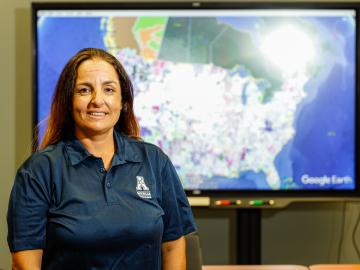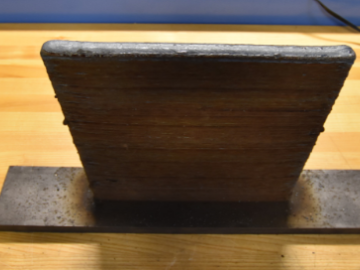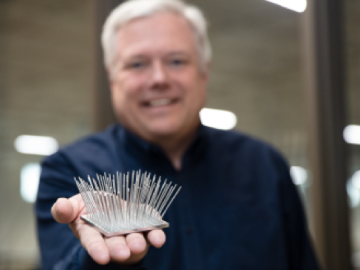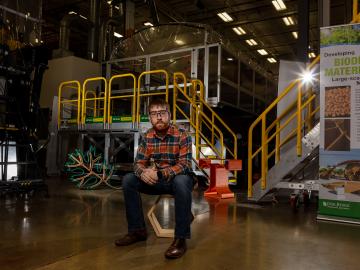
Filter News
Area of Research
- Advanced Manufacturing (10)
- Biology and Environment (2)
- Computer Science (1)
- Electricity and Smart Grid (1)
- Energy Science (34)
- Fusion Energy (1)
- Isotopes (5)
- Materials (6)
- Materials for Computing (1)
- National Security (3)
- Neutron Science (4)
- Nuclear Science and Technology (2)
- Quantum information Science (1)
- Sensors and Controls (1)
- Supercomputing (2)
News Type
News Topics
- (-) 3-D Printing/Advanced Manufacturing (25)
- (-) Biomedical (3)
- (-) Cybersecurity (4)
- (-) Energy Storage (12)
- (-) Grid (10)
- (-) Isotopes (5)
- (-) Physics (4)
- (-) Space Exploration (6)
- Advanced Reactors (7)
- Artificial Intelligence (8)
- Big Data (10)
- Bioenergy (8)
- Biology (12)
- Biotechnology (3)
- Buildings (7)
- Chemical Sciences (1)
- Clean Water (9)
- Composites (5)
- Computer Science (27)
- Coronavirus (4)
- Critical Materials (2)
- Environment (33)
- Exascale Computing (1)
- Fusion (6)
- High-Performance Computing (9)
- ITER (3)
- Machine Learning (3)
- Materials (17)
- Materials Science (20)
- Mathematics (1)
- Mercury (2)
- Microscopy (6)
- Molten Salt (1)
- Nanotechnology (5)
- National Security (2)
- Neutron Science (14)
- Nuclear Energy (13)
- Polymers (3)
- Quantum Computing (1)
- Quantum Science (7)
- Security (1)
- Statistics (1)
- Summit (2)
- Transportation (23)
Media Contacts

Isabelle Snyder calls faults as she sees them, whether it’s modeling operations for the nation’s power grid or officiating at the US Open Tennis Championships.

Using additive manufacturing, scientists experimenting with tungsten at Oak Ridge National Laboratory hope to unlock new potential of the high-performance heat-transferring material used to protect components from the plasma inside a fusion reactor. Fusion requires hydrogen isotopes to reach millions of degrees.

Using the Titan supercomputer at Oak Ridge National Laboratory, a team of astrophysicists created a set of galactic wind simulations of the highest resolution ever performed. The simulations will allow researchers to gather and interpret more accurate, detailed data that elucidates how galactic winds affect the formation and evolution of galaxies.

Scientists at Oak Ridge National Laboratory studying quantum communications have discovered a more practical way to share secret messages among three parties, which could ultimately lead to better cybersecurity for the electric grid

A team of researchers at Oak Ridge National Laboratory have demonstrated that designed synthetic polymers can serve as a high-performance binding material for next-generation lithium-ion batteries.

Scientists have discovered a way to alter heat transport in thermoelectric materials, a finding that may ultimately improve energy efficiency as the materials

A novel additive manufacturing method developed by researchers at Oak Ridge National Laboratory could be a promising alternative for low-cost, high-quality production of large-scale metal parts with less material waste.

When Scott Smith looks at a machine tool, he thinks not about what the powerful equipment used to shape metal can do – he’s imagining what it could do with the right added parts and strategies. As ORNL’s leader for a newly formed group, Machining and Machine Tool Research, Smith will have the opportunity to do just that.

Scientists at Oak Ridge National Laboratory have developed a low-cost, printed, flexible sensor that can wrap around power cables to precisely monitor electrical loads from household appliances to support grid operations.

Alex Roschli is no stranger to finding himself in unique situations. After all, the early career researcher in ORNL’s Manufacturing Systems Research group bears a last name that only 29 other people share in the United States, and he’s certain he’s the only Roschli (a moniker that hails from Switzerland) with the first name Alex.


